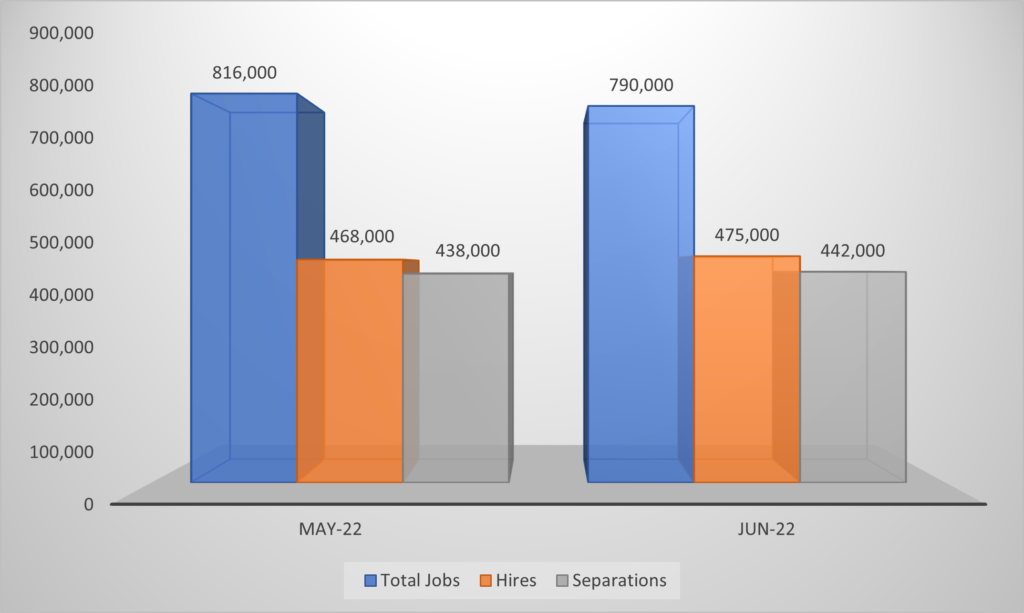The US manufacturing sector continues to show strength and has more job openings than qualified candidates to fill them. According to Carolyn Lee, president of the Manufacturing Institute, “Research shows the next generation is looking for careers that matter. They want to have an impact, and they want the potential for family-supporting jobs with upward mobility, all of which are characteristics of modern manufacturing.”
The graph below indicates the turnover in manufacturing jobs for May and June 2022.
Data from the US Bureau of Labor Statistics
These numbers illustrate a dynamic work environment. Although manufacturing continues to recover from the pandemic, the reality is that more employees are leaving the market than entering the market. “Boomers are retiring, millennials are approaching middle age, and Gen Z that follows them is comparatively small.” Manufacturers will no longer be able to assume there will be replacement workers for those that leave the sector. Future workers will be in a better employment position if these forecasts prove accurate. As a result, the jobs pay better and they are reliable and long term positions.
Deloitte projects a shortage of 2.3 million skilled jobs by 2030. 38% of manufacturing executives say that finding new workers is their top priority for 2022 and forward. A recent National Law Review survey found that manufacturers are trying to recruit new groups of people:
- 60% are targeting nearby trade schools and community colleges
- 40% are targeting military veterans
- 50% are targeting employees of other local employers
How Education 4.0 Can Help the Shortage
Career and technical education (CTE) in both high schools and community colleges is the number one recruiting target for new manufacturing jobs. A curriculum that blends teacher-led instruction with hands-on practice prepares students with the technical skills they require the first day of a manufacturing job. Once someone is hired, individual companies will take over the ongoing training and upskilling of their employees. Manufacturers understand that in order to keep their employees, they need to continually invest in their employees. And that the ROI on this kind of investment stabilizes their companies and contributes to profitability.
Industry 4.0 education classes in engineering and robotics help prepare students for available jobs now and those in the future and propel students into more desirable companies who have adopted advanced smart manufacturing. It is a safe to say that all future jobs to some degree will be technical jobs. There will be increased growth in automation, introduction of AI into technology tools, and the rate of change will continue to accelerate. Graduates of programs that are teaching these skills now will have an advantage.
In addition, Students in CTE programs who achieve a certification when they graduate have validated credentials, and many of these students are recruited directly out of their programs into current job openings.
The US has great need for technically skilled workers who can make a living wage with career growth opportunities. There is already a huge need for skilled workers in the manufacturing sector—there are more job openings than people to fill them, and that will continue into the foreseeable future. Investing in CTE provides an upward path for students who may not want to go to college but want to build and grow a career in manufacturing or industrial sectors.
This record number of unfilled jobs provides the impetus to launch or strengthen Industry 4.0 courses.

























